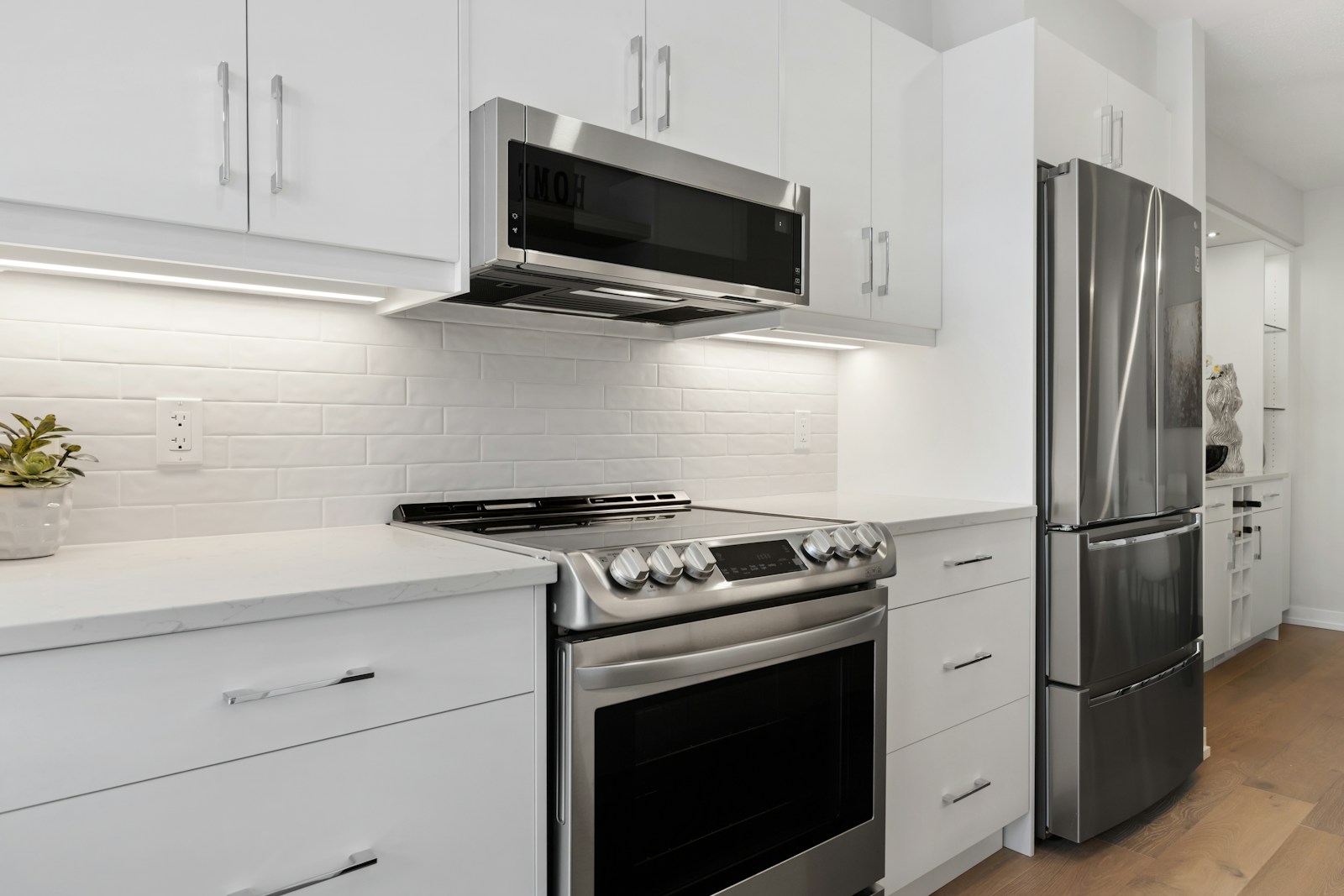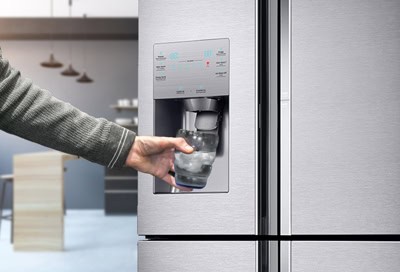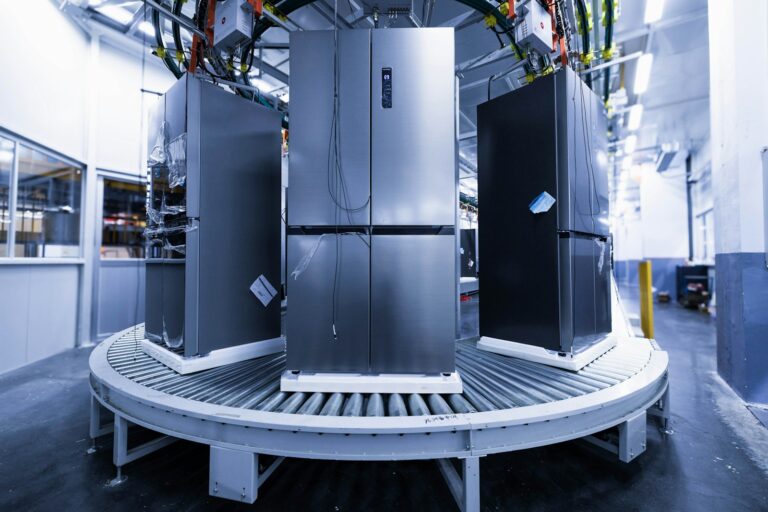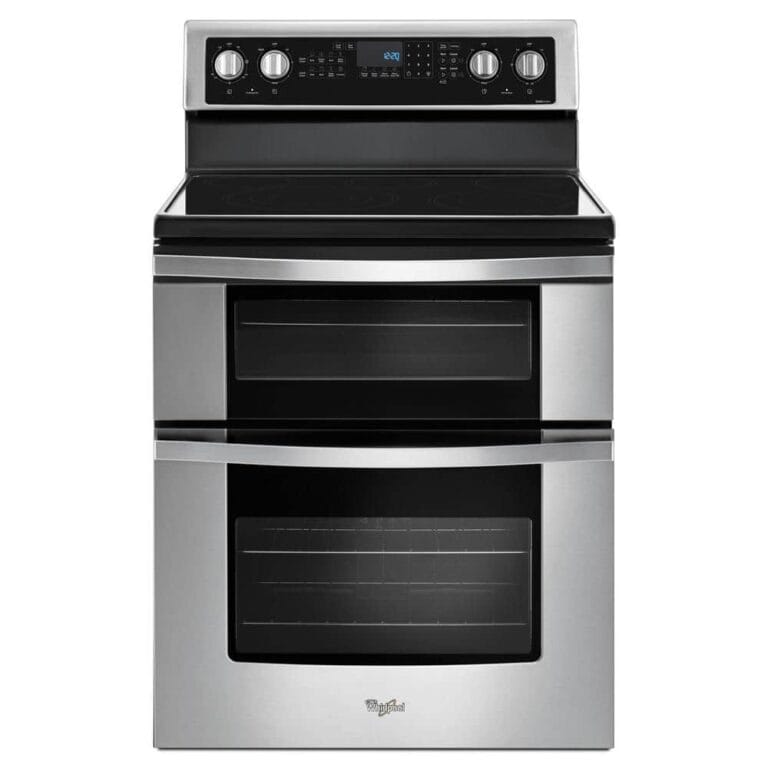
Kitchen disasters often strike at the worst possible times. An oven that won’t heat properly can ruin a dinner party or leave a family waiting for their meal. From uneven baking to temperature issues, oven problems are frustrating but often fixable without calling a professional. Many common oven problems can be solved with simple troubleshooting steps like checking power connections, replacing faulty heating elements, or recalibrating temperature settings.
Whether you have an electric model that’s not heating up or a gas oven with inconsistent temperatures, understanding the root cause is the first step to a solution. Simple fixes like resetting the circuit breaker for an electric oven or replacing a burned-out light bulb can solve problems quickly. For more stubborn issues like a door that won’t open, unplugging the oven for 30 seconds might reset the electronic controls and resolve the issue.
Fixes for Common Oven Issues
Ovens sometimes stop working or fail to heat properly, which can disrupt your cooking plans. Below are the most common oven problems and practical steps to fix them.
1. Oven Won’t Heat
Causes:
- Broken heating element (electric ovens)
- Faulty igniter (gas ovens)
- Defective thermostat or temperature sensor
- Power supply issues
Fixes:
- Check the heating element: In electric ovens, the heating element should glow red when heating. If it remains dark, replace the element.
- Inspect the igniter: For gas ovens, a weak or broken igniter won’t light the burner. Replace the igniter if it’s cracked or not glowing.
- Test the thermostat/sensor: A faulty sensor can prevent the oven from reaching the set temperature. Use a multimeter to test and replace if necessary.
- Verify power supply: Check the circuit breaker and power cord for issues.
2. Oven Temperature Is Inaccurate
Causes:
- Malfunctioning thermostat
- Faulty temperature sensor
- Calibration issues
Fixes:
- Calibrate your oven: Refer to your oven’s manual for calibration instructions.
- Replace the temperature sensor: If readings are inconsistent, a new sensor might be needed.
- Use an external oven thermometer: This helps verify actual oven temperature.
3. Oven Door Won’t Close Properly
Causes:
- Misaligned or damaged door hinges
- Worn door gasket
Fixes:
- Realign or replace hinges: Adjust hinges to ensure the door closes tightly.
- Replace the gasket: A worn gasket can cause heat loss and uneven cooking.
4. Oven Light Not Working
Causes:
- Burnt-out bulb
- Faulty light socket or switch
Fixes:
- Replace the bulb: Use the correct type specified in your manual.
- Inspect and replace socket or switch: If the bulb replacement doesn’t work, check wiring and components.
5. Oven Timer or Controls Not Responding
Causes:
- Faulty control board
- Electrical issues
Fixes:
- Reset the oven: Turn off power for a few minutes and turn back on.
- Replace control board: If resetting doesn’t help, the control panel may need replacement.
When to Call a Professional
If you’ve tried these fixes and your oven still doesn’t work properly, or if you’re uncomfortable performing electrical or gas-related repairs, contact a certified appliance repair technician.
Sources:
- ApplianceGist: My Oven Does Not Work
- Bob Vila: Oven Not Heating Properly?
- MasterFixAppliances: Oven Not Heating? 10 Common Causes
- EasyLifeAppliances: How To Fix an Oven That Is Not Heating Properly
Key Takeaways
- Most oven problems stem from power issues, faulty heating elements, or temperature calibration problems that can be diagnosed with basic troubleshooting.
- Regular maintenance like cleaning burner components and checking door seals prevents many common oven malfunctions.
- Simple reset procedures often resolve electronic control issues without requiring professional repair services.
Understanding Oven Basics
Before troubleshooting oven problems, it’s important to understand how ovens work and their main components. Different types of ovens operate on unique principles, which affects how you diagnose and fix issues.
Differentiating Between Electric and Gas Ovens
Electric ovens heat using electrical resistance elements. They typically have heating elements at both the top and bottom of the oven cavity. The bottom element provides the main heat for baking, while the top element is used for broiling.
Electric ovens generally provide more consistent heating and precise temperature control. They heat up more slowly than gas models but distribute heat more evenly.
Gas ovens use natural gas or propane as fuel. They feature a gas burner at the bottom of the oven that ignites with an electric igniter or pilot light. Gas ovens heat up quickly and provide instant heat adjustments.
Many professional cooks prefer gas ovens for their quick response times and the moist heat environment they create, which can be beneficial for certain types of cooking.
Components of an Oven
The heating element is the part that produces heat. In electric ovens, there are typically two elements – one at the bottom for baking and one at the top for broiling. In gas ovens, a burner tube serves this purpose.
The thermostat monitors and regulates oven temperature. When it senses the temperature has reached the set point, it temporarily shuts off the heating element.
An oven light allows you to check food without opening the door. Most ovens have a manual switch to turn this on and off.
Modern ovens often include a control lock feature to prevent accidental operation, especially important for homes with children.
Many newer models offer a self-cleaning oven function that heats the oven to extremely high temperatures (around 900°F) to burn off food residue, reducing the need for manual cleaning.
Common Oven Issues and Diagnostic Tips
Ovens can develop various problems that affect their performance. Below are the most common issues homeowners face and how to diagnose them before attempting repairs or calling a professional.
Oven Not Heating
One of the most frustrating oven problems is when it refuses to heat up. For electric ovens, the issue often stems from a faulty heating element. These elements typically glow red when working properly. If you don’t see this red glow, the element likely needs replacement.
For gas ovens, a failed igniter is typically the culprit. The igniter has two important jobs: drawing electricity to heat up and opening the gas valve. When it weakens, it may glow but fail to open the valve. Damaged igniters must be replaced according to manufacturer instructions.
Other potential causes include:
- Broken internal fuses
- Faulty temperature sensors
- Problems with the oven control board
- Power supply issues
Before calling a technician, check your circuit breaker and ensure the oven is properly plugged in. For gas ovens, verify the gas supply is turned on.
Inaccurate Oven Temperature
When cookies burn or cakes remain undercooked, your oven might have temperature calibration issues. Actual oven temperatures can vary by 25-50°F from what’s displayed on the control panel.
To test your oven’s accuracy:
- Place an oven-safe thermometer in the center of the middle rack
- Heat the oven to 350°F
- Check the thermometer after 20 minutes
- Take additional readings every 20 minutes for an hour
Temperature fluctuations are normal during cooking cycles, but consistent discrepancies indicate a problem. The issue commonly stems from a faulty temperature sensor or thermostat.
Many modern ovens allow temperature recalibration through the control panel. Check your owner’s manual for specific instructions. For older models, you might need to adjust the thermostat manually or replace the temperature sensor.
Oven Is Too Hot
An oven that runs too hot can ruin meals and potentially create safety hazards. If food consistently burns despite following recipes correctly, your oven is likely overheating.
Common causes include:
- Faulty thermostat: Unable to regulate temperature properly
- Temperature sensor issues: Providing incorrect readings to the control board
- Control board malfunction: Failing to process temperature data correctly
For electric ovens, a malfunctioning thermostat can cause continuous heating without cycling off. This creates dangerously high temperatures that pose fire risks.
Testing requires a multimeter to check the temperature sensor’s resistance. As the oven heats, resistance should increase. If readings remain constant, the sensor needs replacement.
The control board might also need inspection, particularly if other oven functions are affected.
Oven Light Malfunctions
A working oven light is essential for monitoring food without opening the door. When the light stops working, first check the simplest solution—replace the bulb with one specifically rated for high-temperature appliances.
If a new bulb doesn’t solve the problem, several other issues might be responsible:
- Faulty light switch
- Broken socket
- Loose wiring connections
- Control board problems
To troubleshoot, first try replacing the bulb. If that doesn’t work, examine the light switch by testing for continuity with a multimeter. The socket might also be damaged from heat exposure over time.
Accessing these components typically requires removing the outer panels of your oven. If you’re uncomfortable with electrical work, this repair is best left to professionals.
Problems During Self-Cleaning Cycles
Self-cleaning cycles expose ovens to extremely high temperatures (800-1000°F) to burn away food residue. This intense heat can sometimes trigger issues.
Common self-cleaning problems include:
- Door locking mechanisms jamming
- Cycle not completing
- Unusual odors or smoke
- Oven failure after cleaning
The door lock mechanism often causes the most trouble, sometimes leaving the oven door jammed closed after the cycle. This happens when the high heat damages the lock or when the oven’s control system fails to release it.
If your oven displays error codes during or after self-cleaning, consult your manual to interpret them. Many newer ovens require a cooling period before unlocking automatically.
To reduce self-cleaning problems, remove large food debris manually before starting the cycle. Consider using the shortest cleaning cycle available to minimize stress on components.
Troubleshooting Electrical Issues
Electrical problems are among the most common reasons ovens fail to work properly. These issues can range from simple fixes like resetting a circuit breaker to more complex problems requiring professional attention.
Tripped Circuit Breaker and Blown Fuses
When an oven suddenly stops working, the first thing to check is whether the circuit breaker has tripped. Locate the electrical panel in your home and look for any switches that are in the “off” position or between “on” and “off.” Resetting the breaker often solves the problem immediately.
If the circuit breaker isn’t the issue, check for a blown fuse. This can be tested using a multimeter – if there’s no continuity, the fuse needs replacement.
Safety tip: Always turn off power to your oven at the circuit breaker before checking internal components or replacing fuses.
For ovens with separate fuse boxes, ensure all fuses are intact and functioning. Replacing blown fuses is usually a simple DIY fix that can restore function quickly.
Faulty Electrical Connections
Loose or damaged wiring can cause intermittent oven operation or complete failure. Signs of connection problems include:
- Oven turning on and off unexpectedly
- Control panel working but heating elements remaining cold
- Burning smells during operation
- Visible damage to power cords
Inspect the power cord for any signs of wear, burns, or damage. Make sure the oven is properly plugged in with a secure connection to the outlet.
For internal connection issues, the problem might be with the connecting wires between components. These issues typically require professional diagnosis as they involve accessing the oven’s internal electrical system.
Warning: Never attempt to repair internal electrical connections without proper training. Electric ovens use high voltage that can cause serious injury.
Identifying Malfunctioning Heating Elements
Heating elements are responsible for generating the heat in electric ovens. When they fail, the oven may not heat properly or at all.
Visual inspection: Check for visible damage such as:
- Blistering or bubbles on the element
- Breaks or separations in the metal
- Areas that don’t glow red when turned on
To test a suspect element, a simple swap method can help. For stovetop elements, try switching out the faulty burner with one that works. If the known-good element fails in the suspect location, the problem is with the socket or connection.
For internal oven elements, resistance testing with a multimeter can confirm if replacement is needed. Most elements should show some resistance – infinite resistance (no continuity) indicates a broken element that needs replacement.
Replacement elements are typically model-specific, so record the oven’s make and model before purchasing replacements.
Temperature Regulation
Maintaining accurate temperature control is essential for successful cooking. When an oven’s temperature fluctuates or doesn’t match the setting, it can ruin recipes and waste time and ingredients.
Testing and Replacing Thermostats
The thermostat is the brain of your oven’s temperature system. When it fails, your oven may run too hot, too cold, or fluctuate unpredictably. To test a thermostat, place an oven-safe thermometer inside and compare its reading to the set temperature.
A difference of more than 25°F indicates a faulty thermostat that likely needs replacement. Before replacing, check that the temperature knobs are secure and undamaged.
Replacement steps vary by model, but typically involve:
- Disconnecting power to the oven
- Removing the back panel
- Detaching the old thermostat wires
- Installing the new thermostat
- Reconnecting wires and testing
A proper replacement ensures the temperature can be accurately controlled, providing reliable performance.
Calibrating Temperature Sensors
Many modern ovens use electronic temperature sensors instead of mechanical thermostats. These sensors can drift over time, causing temperature inaccuracies.
Most digital ovens have built-in calibration settings. To access them, check the owner’s manual for specific instructions—typically involving pressing certain button combinations.
The calibration process usually allows adjustments in 5-10 degree increments. After calibrating, verify the correction by using an oven thermometer during preheating.
Common causes of sensor problems include:
- Damaged wiring
- Sensor position shifting
- Accumulated debris around the sensor
- Normal aging and wear
If calibration doesn’t solve the issue, the temperature sensor may need replacement. This is similar to thermostat replacement but involves locating and replacing the thin probe-like sensor inside the oven cavity.
Oven Feature-Specific Challenges
Modern ovens come with special features that can sometimes cause confusion when they don’t work properly. These features are designed to make cooking easier but might create unexpected problems if activated accidentally or not working correctly.
Addressing Demo Mode Concerns
Demo mode is a feature built into many newer ovens for showroom display purposes, and it can be frustrating when accidentally activated. When in demo mode, the oven’s display and lights operate normally, but the appliance won’t heat up. This feature is designed to demonstrate the oven’s functions without using energy or generating heat.
To check if demo mode is active, look for indicators on the display panel like “DEMO” or “d” symbols. Most manufacturers include specific button combinations to exit this mode.
Common methods to deactivate demo mode include:
- Pressing and holding specific button combinations (often TIMER and CLOCK)
- Turning the power off at the breaker for 30 seconds
- Consulting the owner’s manual for the exact procedure for your model
Deactivating demo mode typically requires holding buttons for 3-5 seconds until you hear a beep confirming the change.
Troubleshooting Control Lock Issues
The control lock feature prevents accidental changes to oven settings and is especially useful in homes with small children. When activated, the control panel becomes unresponsive, and users often mistake this for a malfunction.
Most ovens display a padlock icon or “LOC” message when the control lock is engaged. This safety feature can cause panic when users can’t operate their oven for meal preparation.
To disable the control lock:
- Locate the control lock button (often labeled with a padlock symbol)
- Press and hold for 3-5 seconds until you hear a confirmation beep
- Check for the disappearance of the lock indicator on the display
If standard unlock procedures don’t work, try turning off power to the oven for a minute at the circuit breaker. This often resets the control panel and clears any electronic glitches affecting the lock function.
Maintenance and Prevention Strategies
Regular maintenance and preventive care are key to extending the life of your oven and avoiding costly repairs. Taking a proactive approach can save you time and money in the long run.
Routine Cleaning and Care for Ovens
Clean your oven at least once every three months to prevent buildup that can affect performance. For light cleaning, wipe down the interior with a damp cloth after the oven has completely cooled.
For deeper cleaning, many modern ovens include a self-cleaning feature that burns away food debris at extremely high temperatures. If using this function, remove racks first and ensure good ventilation.
Alternatively, make a paste with baking soda and water, apply it to oven surfaces (avoiding heating elements), and let it sit overnight. Wipe clean the next day with vinegar and water solution.
Oven rack maintenance:
- Remove and soak in warm, soapy water
- Scrub with a non-abrasive brush
- Dry completely before reinstalling
Don’t forget to clean the door seal (gasket) gently to maintain proper heat retention.
Ensuring Proper Use and Safety Precautions
Regular inspection helps identify potential issues before they become serious problems. Check door hinges, seals, and heating elements periodically for signs of wear or damage.
Avoid overloading the oven with too many items at once. This restricts airflow and can cause uneven cooking or strain heating elements. Leave at least an inch of space between bakeware and oven walls.
Safety measures to follow:
- Never line the bottom of the oven with foil (can cause overheating)
- Use oven mitts even for quick checks
- Keep flammable items away from the oven area
- Ensure proper ventilation during use
Calibrating your oven’s thermostat annually helps maintain temperature accuracy. Use an oven thermometer to verify the actual temperature matches what’s displayed on the dial or digital readout.
For gas ovens, be alert to unusual odors that might indicate a gas leak. If detected, turn off the oven immediately and contact a professional.
Expert Repair and Professional Services
Sometimes oven problems go beyond simple DIY fixes and require professional attention. Knowing when to call for help and finding reliable repair services can save you time, money, and prevent potential safety hazards.
When to Call an Appliance Expert
Not all oven issues can be safely addressed by homeowners. You should contact an appliance expert when:
- The oven won’t heat up at all despite functioning controls
- There are electrical issues like sparking or burning smells
- Gas ovens have pilot light problems or gas odors
- Internal components are visibly damaged
- Previous DIY attempts haven’t resolved the issue
Professional technicians have specialized tools and training to diagnose complex problems. They understand the intricate electrical systems and safety features modern ovens contain.
Many repair companies offer diagnostic services for a reasonable fee, which is often applied toward repair costs if you proceed with their service.
Finding a Trusted Oven Repair Service
Locating reliable oven repair services requires some research. Start by:
- Checking credentials: Look for licensed, insured technicians with proper certifications
- Reading reviews: Online ratings and customer testimonials reveal service quality
- Requesting quotes: Compare pricing from multiple providers
- Confirming warranty coverage: Some repairs might be covered by manufacturer warranties
Many reputable services offer same-day appointments and provide upfront pricing before beginning work. Ask whether they guarantee their repairs and what that guarantee includes.
Local appliance repair companies often provide more personalized service than national chains. They typically have experience with various oven brands and models commonly found in your area.
When scheduling service, be prepared to describe your oven’s symptoms in detail to help technicians arrive prepared with appropriate parts.
Frequently Asked Questions
Oven issues can be frustrating but many common problems have straightforward solutions. These answers address the most frequent concerns about malfunctioning ovens and provide practical troubleshooting advice.
Why is my oven not heating up properly?
An oven that won’t heat properly often has issues with the heating elements. In electric ovens, check if the bake or broil elements glow red when turned on. If they don’t, they may need replacement.
For gas ovens, a faulty igniter is typically the culprit. The igniter may fail to draw enough electrical current to open the gas valve. This is one of the most common oven problems homeowners face.
Temperature sensor issues can also prevent proper heating. If the sensor is touching the oven wall or has become bent, it may give inaccurate readings and cause heating problems.
How can I troubleshoot temperature issues in my oven?
Start by checking the temperature accuracy with an oven thermometer. Place it inside, set a specific temperature, and compare the thermometer reading with the set temperature after preheating.
If readings are consistently off, the oven may need calibration. Many models allow users to adjust temperature settings through the control panel. Check the owner’s manual for specific instructions.
Another common cause of temperature inconsistencies is a faulty thermostat or temperature sensor. These components can deteriorate over time and may need professional replacement.
What are the common problems that could cause an oven to stop working?
Power supply issues are often responsible for complete oven failure. Check if the oven is properly plugged in and that the circuit breaker hasn’t tripped.
A broken heating element is another frequent cause. If the elements aren’t glowing or heating, they likely need replacement. This is a relatively simple repair that can often be done without professional help.
Control board failures can also cause an oven to stop working entirely. Signs include unresponsive buttons, error codes, or the oven not turning on at all.
Gas ovens may stop working due to problems with the gas supply or igniter. If you smell gas, leave immediately and call a professional.
When should I consider repairing versus replacing my oven?
Consider the age of your oven when deciding whether to repair or replace it. Most ovens last 13-15 years. If yours is approaching this age, replacement might be more economical than repairs.
Compare repair costs to the price of a new oven. If repairs would cost more than 50% of a new unit, replacement is generally the better option.
Frequent breakdowns indicate it’s time for a replacement. Multiple repairs within a short period suggest the appliance is reaching the end of its useful life.
Energy efficiency is another factor to consider. Newer models are typically more efficient, potentially saving money on utility bills over time.
How can I identify the cause of my oven’s malfunction?
Listen for unusual sounds like clicking, buzzing, or humming that may indicate electrical problems or fan motor issues. Different sounds can point to specific components that need attention.
Check for visible damage to heating elements, wires, or control panels. Burned or broken elements are usually easy to spot and often the source of heating problems.
Use error codes if your oven displays them. Modern ovens often have diagnostic systems that display specific codes for different malfunctions. The owner’s manual can help interpret these codes.
Test different functions separately. For instance, if the bake function fails but broil works, the issue is likely with the lower heating element rather than the control board.
What steps should I take for safely troubleshooting my oven?
Always disconnect the power before attempting any repairs. For electric ovens, unplug the unit or turn off the circuit breaker. For gas ovens, also turn off the gas supply valve.
Allow the oven to cool completely before starting any troubleshooting. Working on a hot oven can cause serious burns and creates unnecessary safety risks.
Use proper tools designed for appliance repair. Improvising with household tools can damage components or create electrical hazards. Basic multimeters can help diagnose electrical issues.
Know when to call professionals, especially for gas oven repairs or complex electrical problems. Gas leaks and electrical issues can be dangerous and often require specialized knowledge.






